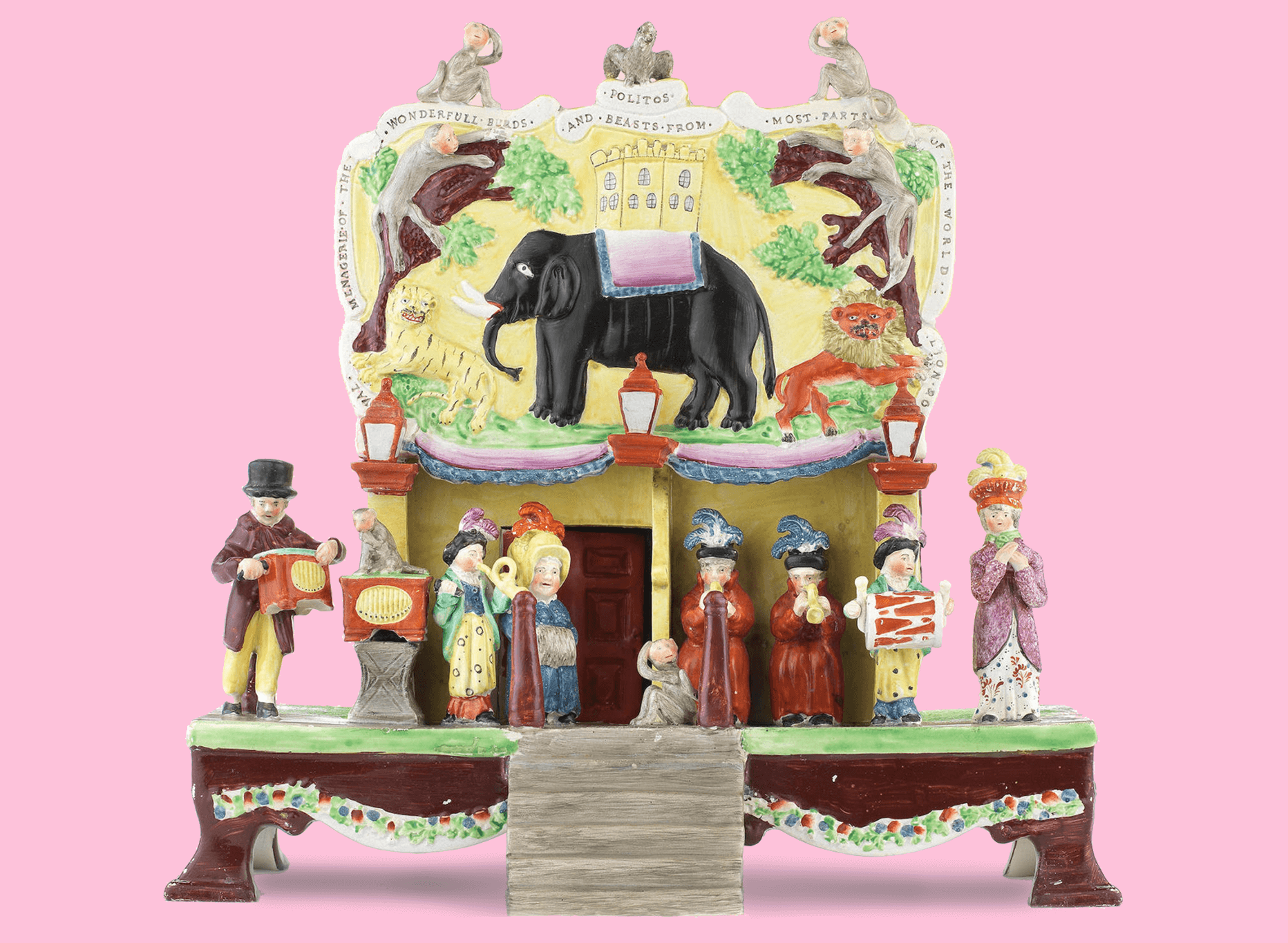Soldier in a shoe figure
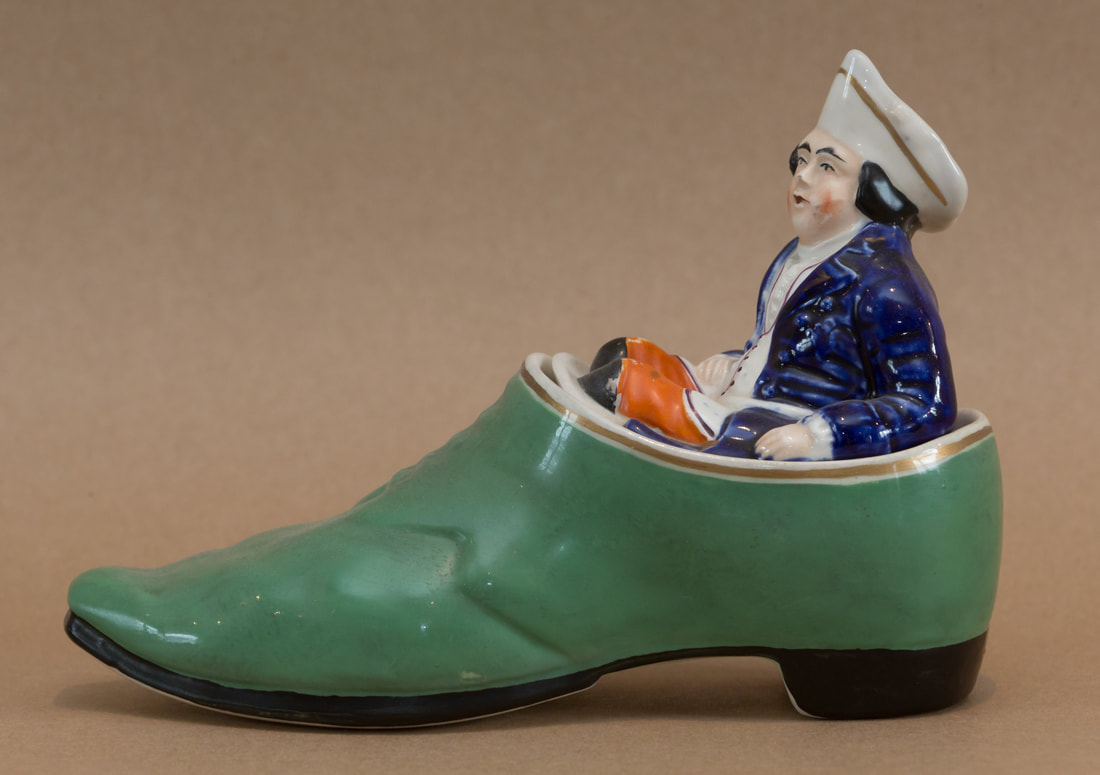
This is an interesting and unusual figure. It represents an unfortunate soldier or sailor who fought in the Crimean war and whose injuries resulted in him losing a leg or legs. It seems somewhat bizarre perhaps one might say cruel that he should find himself sitting in a shoe which is of course the very thing he will be missing if he has no leg!
The tops appear from time to time but the shoe is often missing and so a complete top with shoe is scarce. This shoe is painted green but it can be pink. The piece is a Crimean figure circa 1856.

More Figures of the month

Rare figure of Victorian card playing
At first glance, this may appear to be an ordinary arbour figure. But upon closer inspection, one can see these three people are engaged in a game of cards.
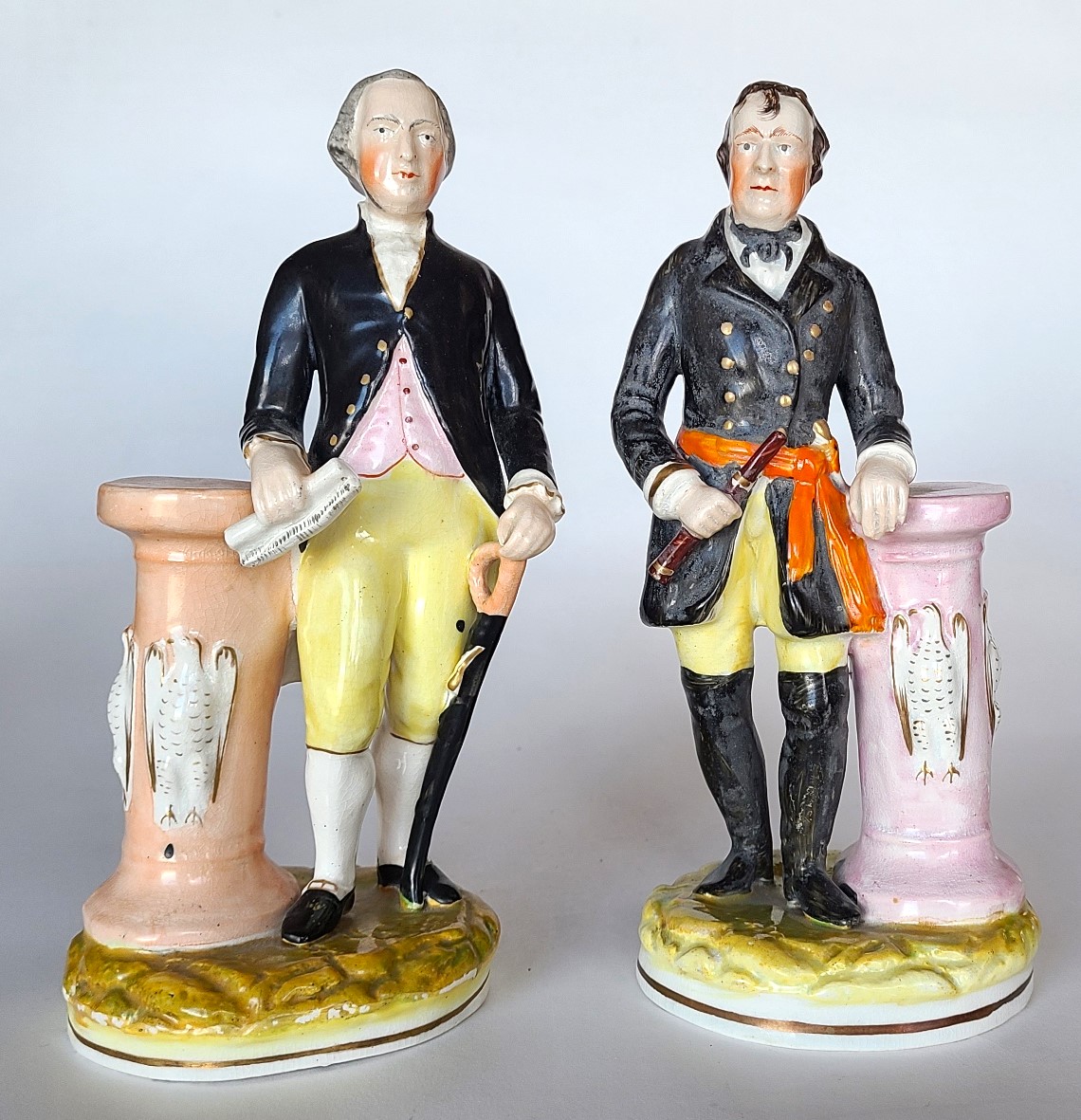
George Washington and Zachary Taylor
This is a very rare pair of figures portraying George Washington and Zachary Taylor. They stand approximately 9” and 9.1″ tall, and date to approximately 1850.
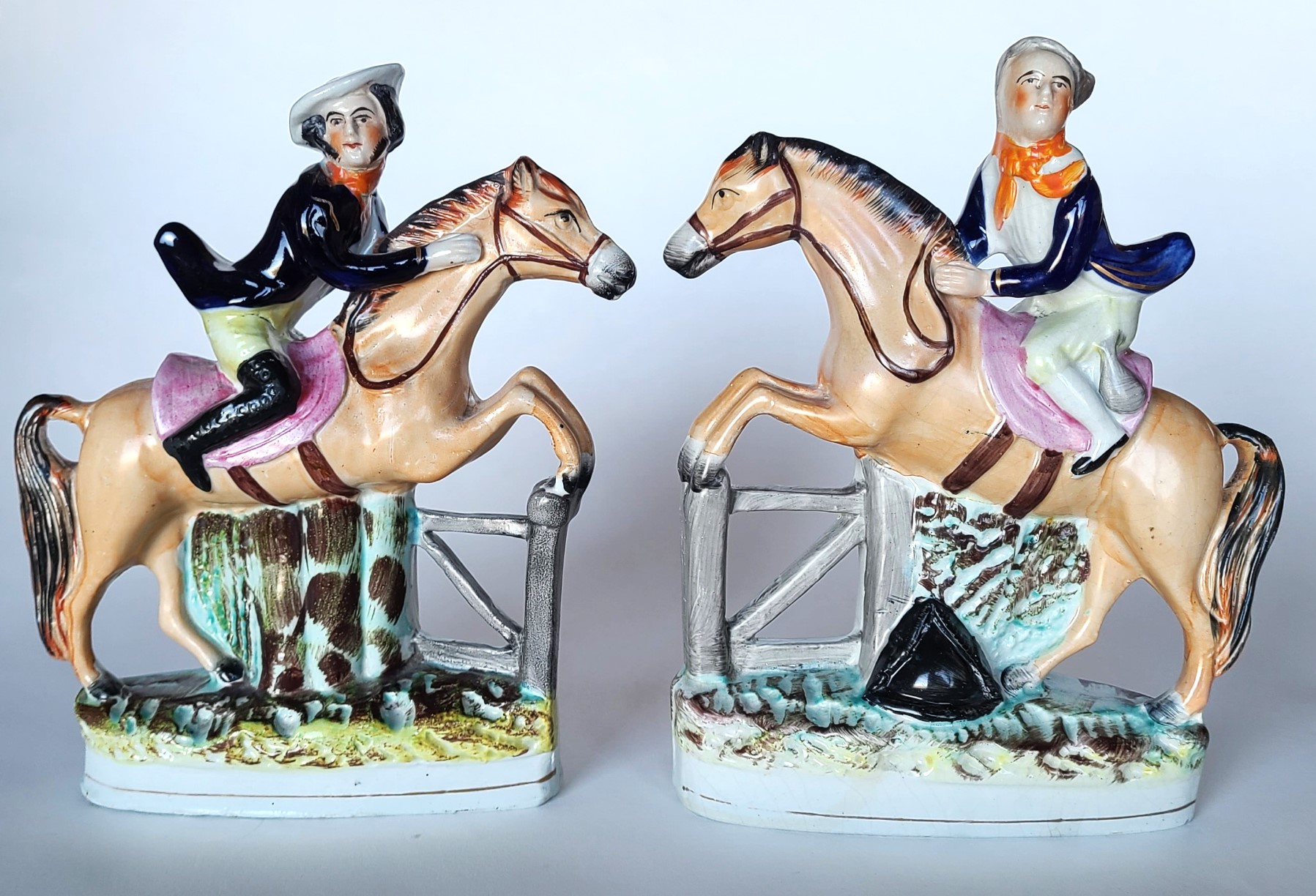
Tam O’Shanter and John Gilpin
This is a very rare pair of figures portraying Tam O’Shanter and John Gilpin. They stand approximately 8.6″ and 9.0″ tall, and date to approximately 1845.
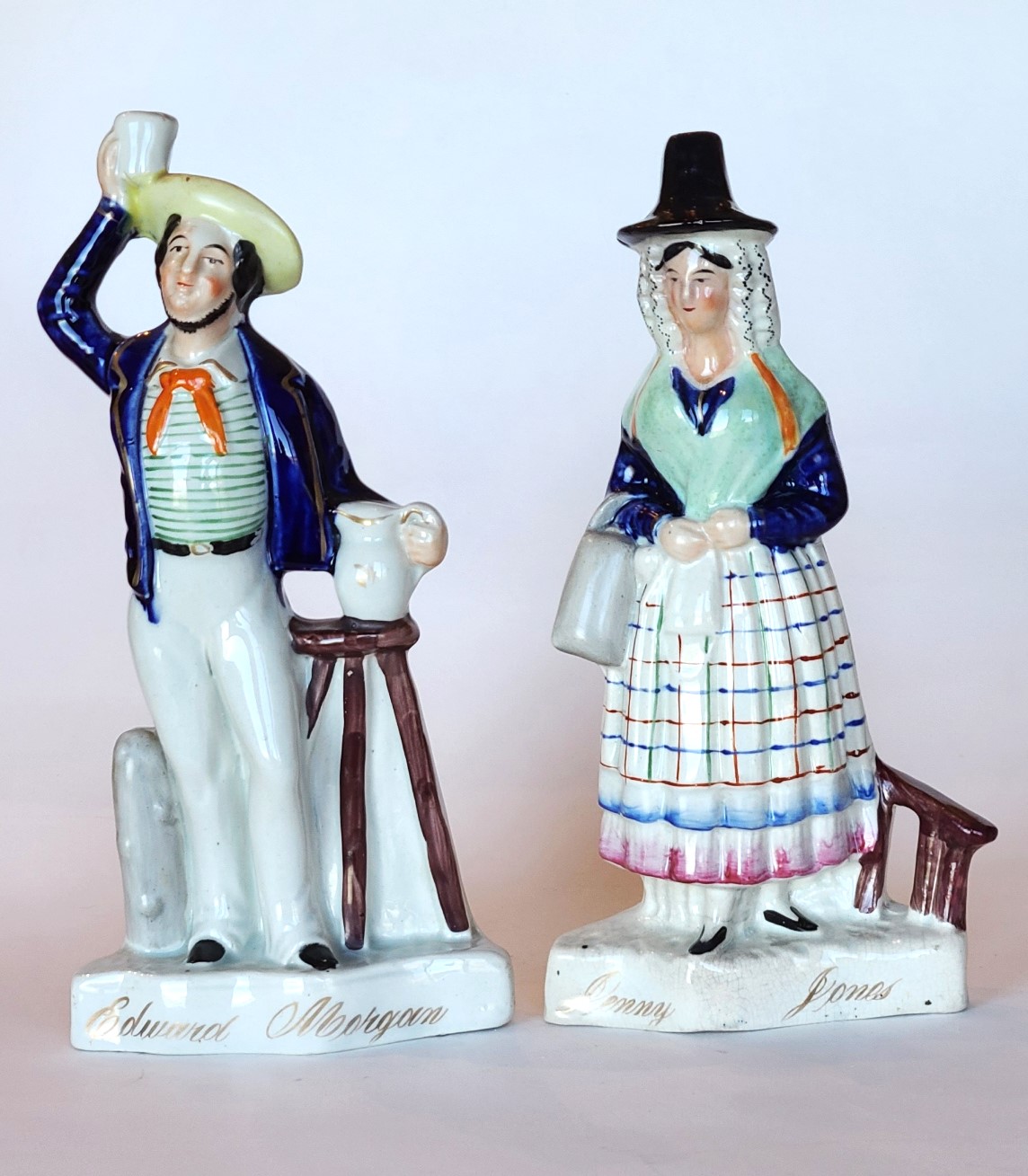
Edward Morgan and Jenny Jones
This is a rare pair of figures portraying Edward Morgan and Jenny Jones, titled with gilt script. The romantic tale of Morgan and Jones was set to music in 1825 by Charles James Mathews.
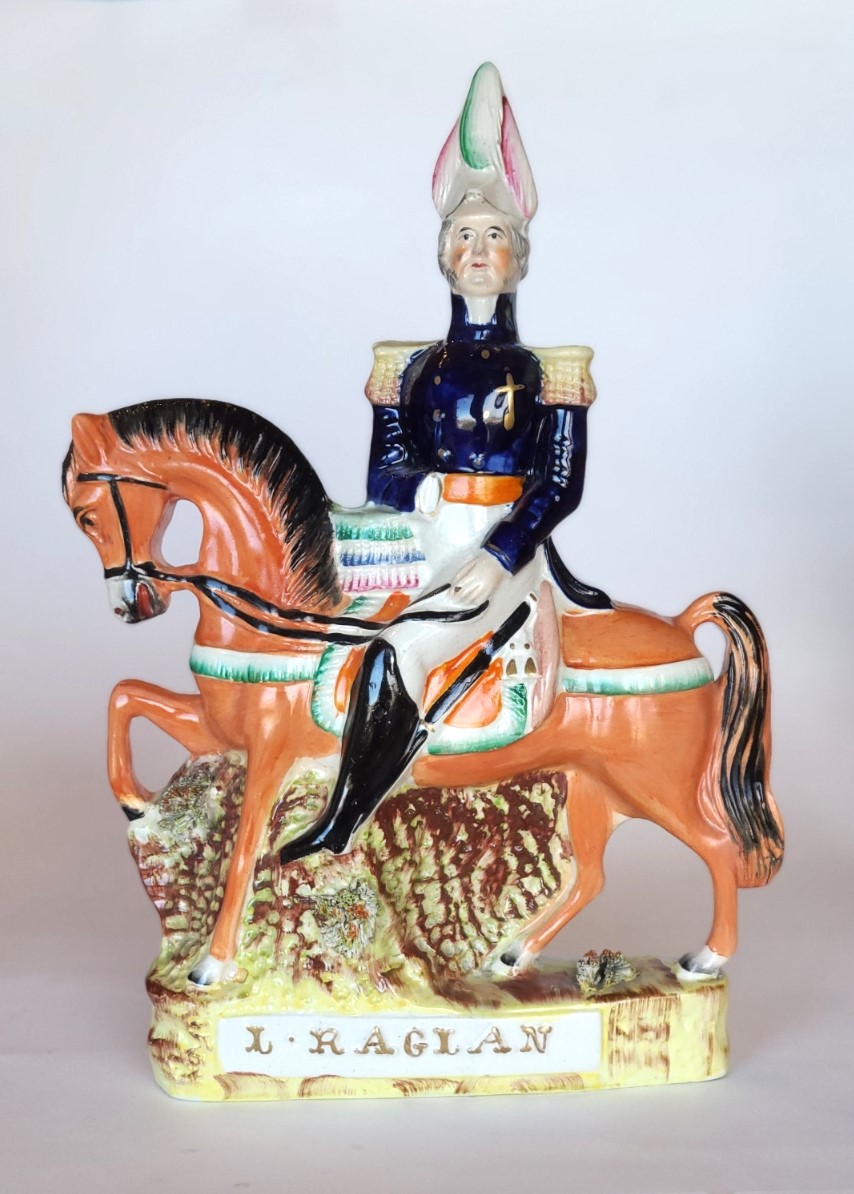
Field Marshal Fitzroy Raglan
This is a rare figure of Field Marshal Fitzroy Raglan. The figure stands about 12 1/4” tall and dates to about 1854.
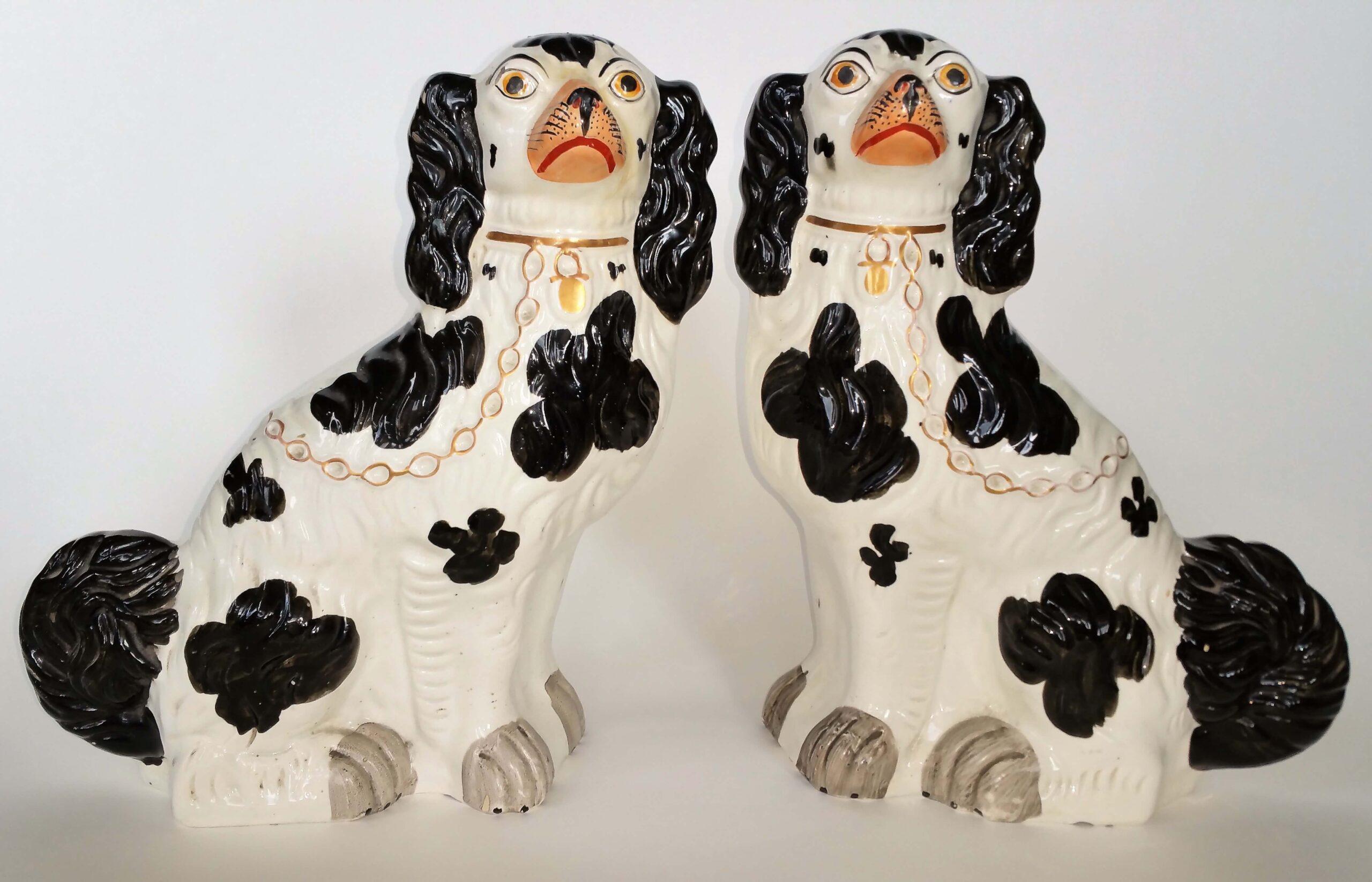
Black and white spaniels
This is fine pair of #1 black and white Staffordshire spaniels. They have a raised number one on the underside, designating them as the largest in a series of six sizes, number six being the smallest.
Membership
We warmly welcome new members – join us for free!
Wherever you are in the world, whether you are an experienced collector, a researcher interested in the folk art of England, or just someone who is intrigued by Staffordshire figures, please join us and get the rest of this year for free! Stay with us next year and pay an annual fee of £45 / $50 per household in January.
